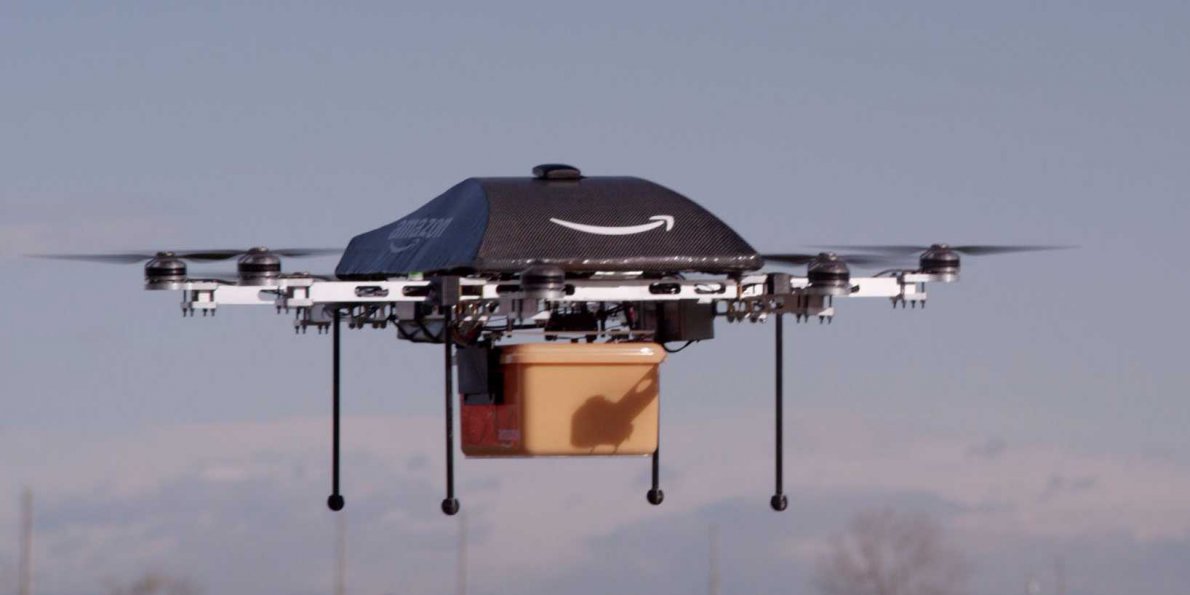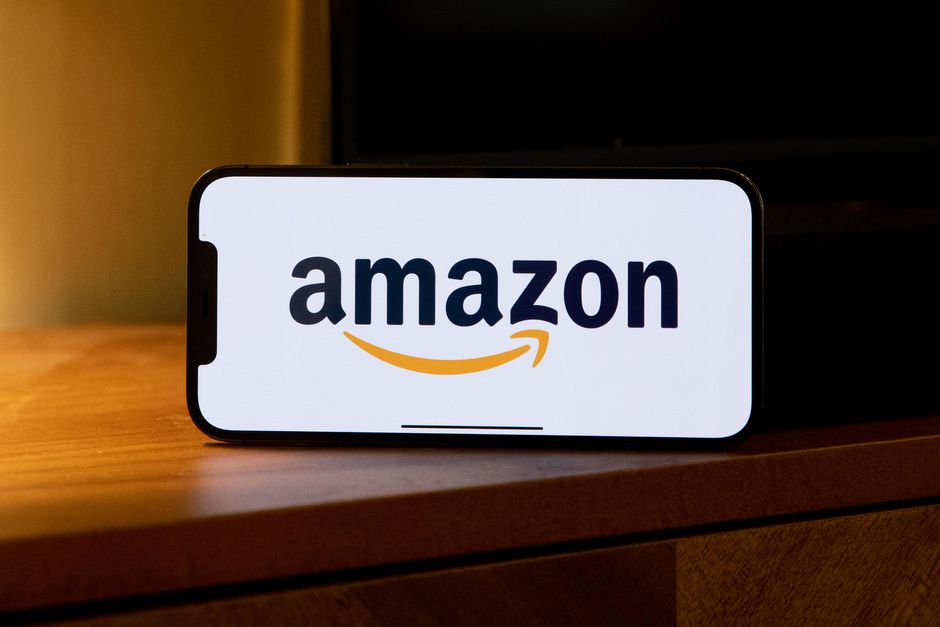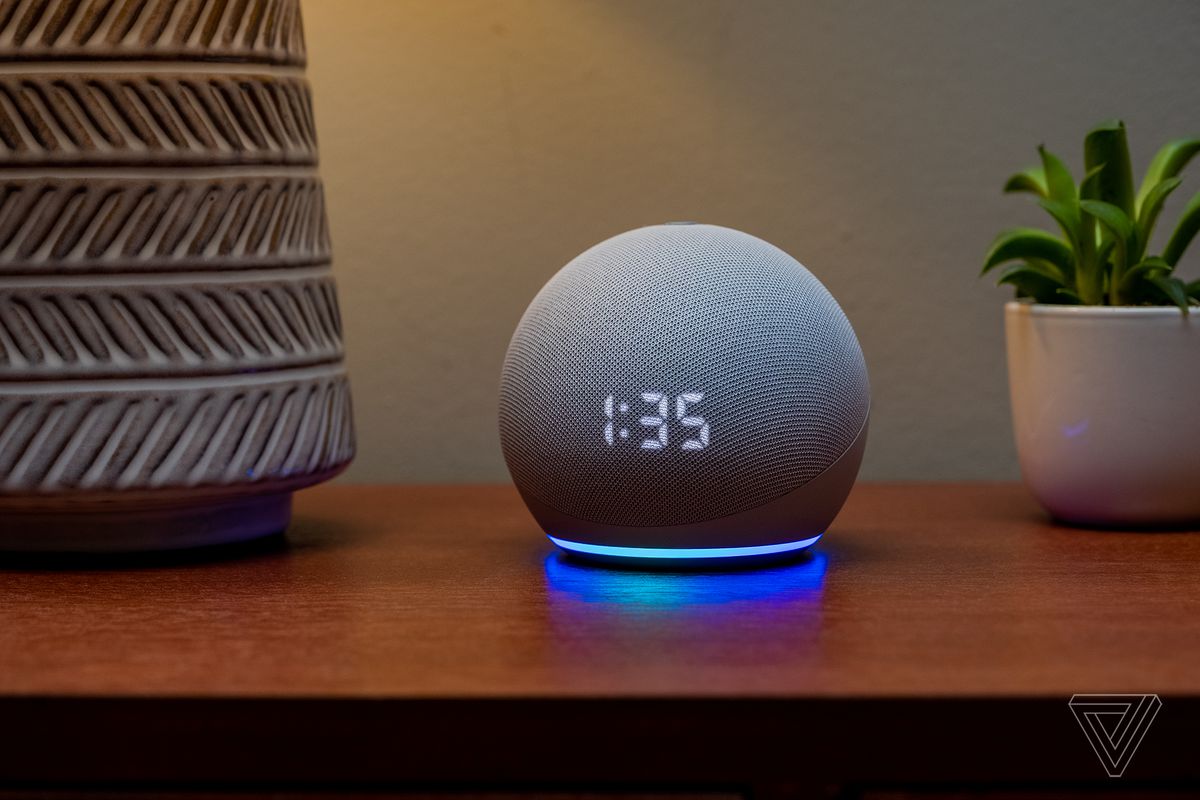After much speculation on the design and look of Amazon’s futuristic delivery drones, we’ve finally been given a glimpse into what these drones might actually look like. A patent filing that was made in 2014 was finally approved and published by the USPTO (United States Patent and Trademark Office) this past week.
You may have already seen the prototypes of these being tested in the United Kingdom, but we finally have hard evidence about how the “quadcopters” will be designed, and how they will recharge themselves on their way to their destinations.
Here are some of the published designs for the delivery drone:
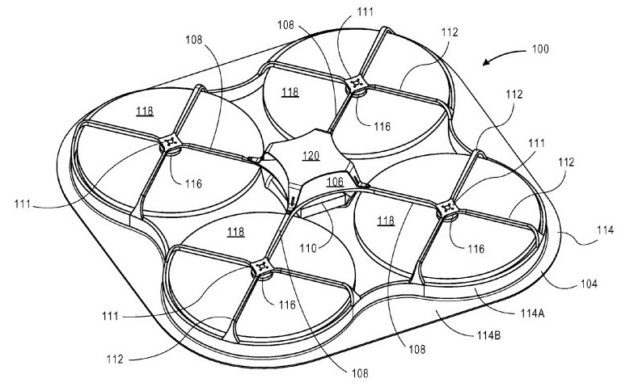
As you can see, the drones will have the familiar quarcopter design, but with protective coverings over its blades. This is not only to ensure that it doesn’t snag on objects, but also assumed to be for the safety of any birds that might come in the drone’s way. Of course, these drones are expected to be “smart” and able to avoid obstacles, but you never know what a passing hawk might be thinking, right?
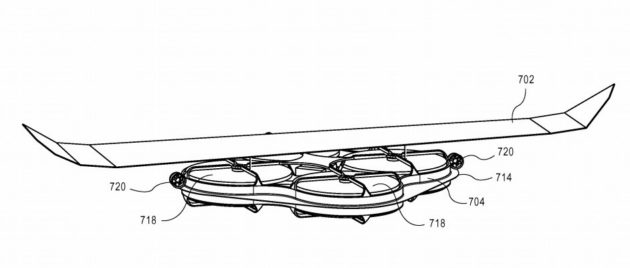
In this next drawing, we can clearly see the wings of the drone extending outside the boundaries of the lift system. From an engineering perspective, this design will give it added lift and stability in the air when traveling through turbulence.
A while ago there was talk about how these “birds” would charge themselves on their way to dropping off or picking up packages, and this has been confirmed by the drawings as well.
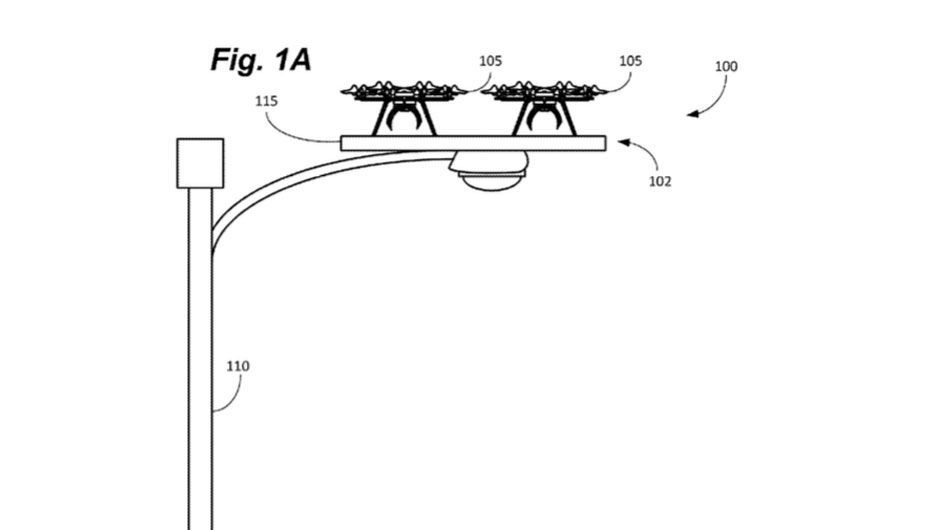
As you can see, Amazon intends to install charging platforms where more than one drone can sit and recharge itself on some of the longer legs of its flight. The installations will be at elevated points such as the tops of street lights.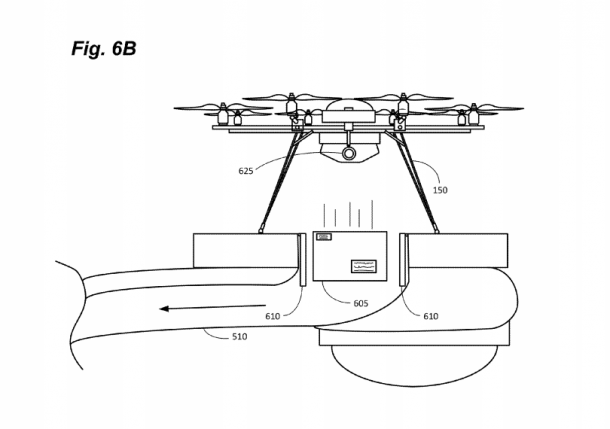
The drawing above shows how the drone will sit on the plate and be charged wirelessly.
As we mentioned in an earlier article, these aren’t going to be self-flying drones. A set of drones will be controlled by a single operator who will be responsible for its safety, punctuality at its destination and other factors.
As of now, the United States Federal Aviation Authority (FAA) has yet to give Amazon the permission to operate these in U.S. air space, so it’s likely that the U.K. tests will continue. The service may well be deployed there instead of back home, at least until the FAA rescinds the ban and agrees to let Amazon have its way.
If you’re reading this on Apple News, please favorite the 1RedDrop channel to add us to your news feed, or Like our page on Facebook. On any other mobile device or desktop, please click here to visit our site for more insightful articles on forward-looking technologies and the companies that are bringing them to us.
